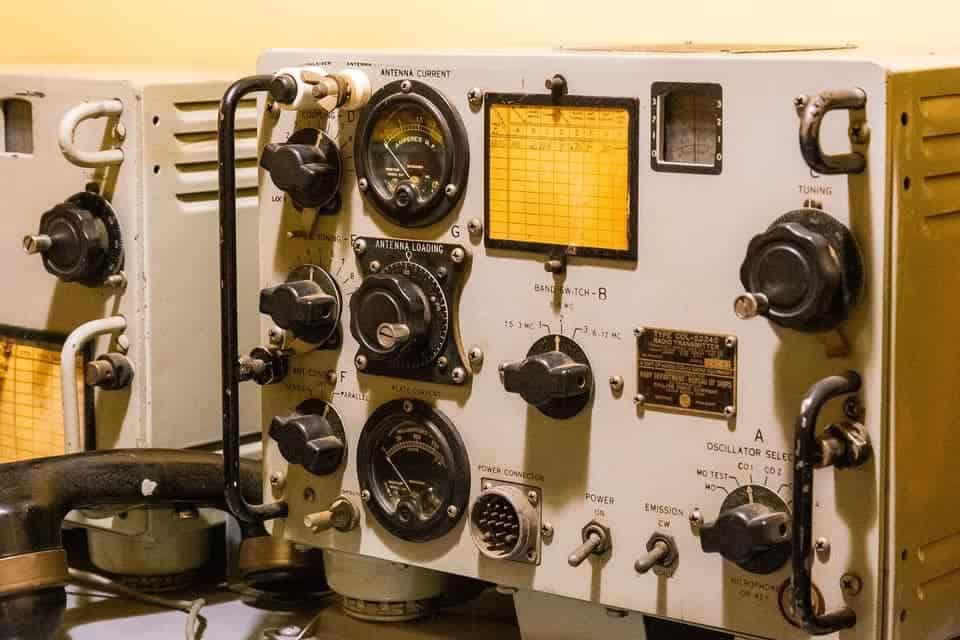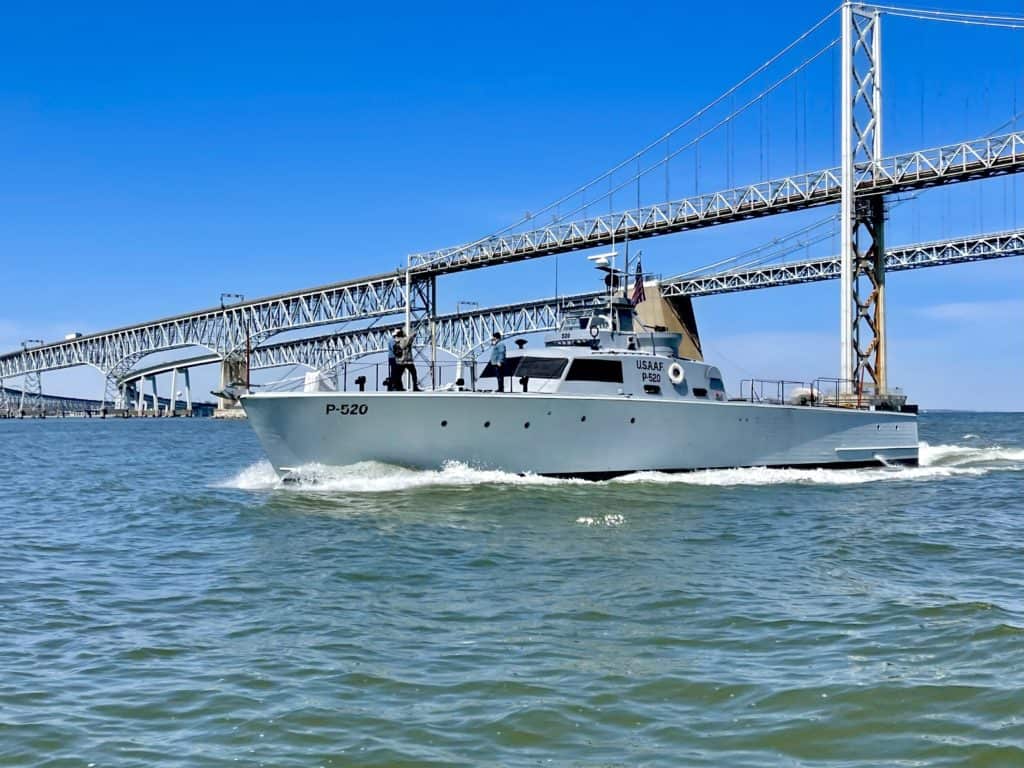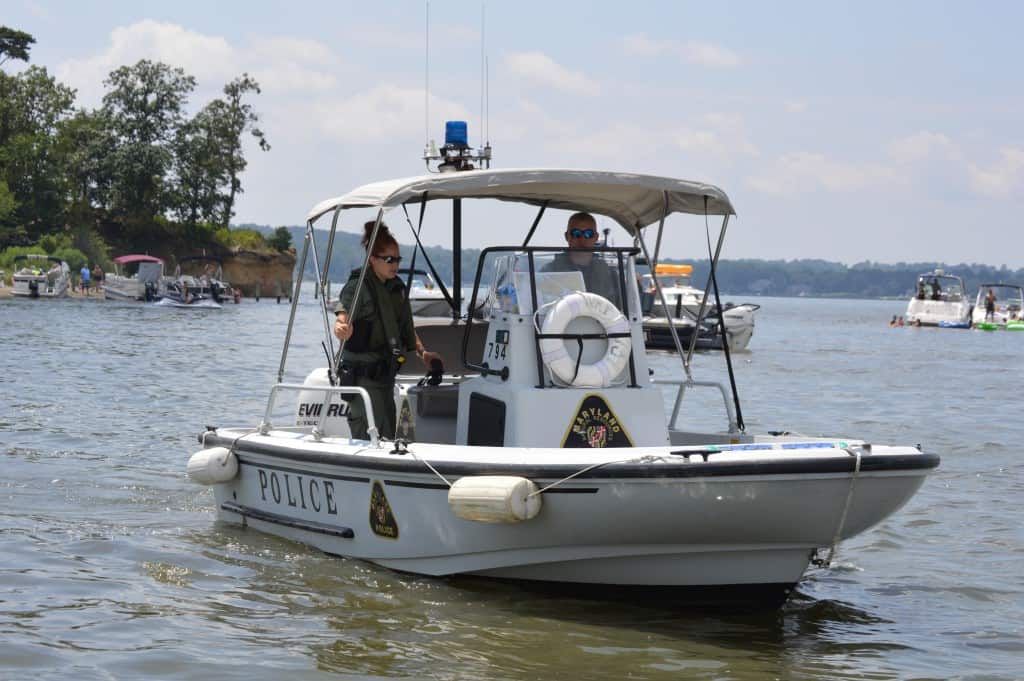Editor’s Note: As of February 2023, the Louisville Naval Museum is now defunct and so we have removed the link to its GoFundMe page.
If you were out on the Chesapeake Bay this past Saturday—a brilliant-blue, cool spring day—you may have seen a piece of World War II history traveling from Curtis Bay to Cambridge.
The P-520 is an 85-foot, wood-hulled U.S. Army Corps rescue boat used to recover downed pilots during the second World War, built in 1944.
The vessel is the last of its kind, and remarkably, it is fully operational in its original military configuration. Its presence on the Chesapeake is improbable considering the P-520 was restored in California and donated to the Louisville Naval Museum in Louisville, Kentucky, who moved her to West Palm Beach, Florida. The boat then made the trip from West Palm to the Chesapeake, arriving via the C&D Canal. P-520 runs on twin diesel engines, but still has the original Packard M4-2500 motors in storage.

P-520 spent the winter in Annapolis, docked at the Annapolis Sailing Center, under the guardianship of consultant Ted Yadlowsky and other enthusastic volunteers. On Saturday, it was moved across the Bay for repairs to damage sustained during the epic trip from California to Florida to Maryland. This final leg to Cambridge brought the P-520 full circle, as Cambridge Shipbuilding built 14 of these rescue boats in the 1940s.
The Louisville Naval Museum says its goal is to find P-520 a home in Annapolis—not just as a docked floating museum, but as a traveling, operational ship with a mission to educate people about the role of crash rescue ships and honoring Chesapeake shipbuilders who made the wooden boats used during World War II. Yadlowsky hopes the U.S. Naval Academy and the City of Annapolis would be interested in establishing a museum ship, perhaps with the support of the Naval Academy’s alumni.
Yadlowsky acknowledges that technically, P-520 is an Army boat. But, he says, “it’s a perfect example of the technology of that time,” and what wooden builders were producing during the war. The vessel’s caretakers are trying to find a home and sustainable plan for the boat without asking for tax dollars—it’s a true grassroots effort.
“P-520 is a pretty special gem…it would not be a burden, and could bring enough tourism” to earn its keep, Yadlowsky tells Bay Bulletin.
-Meg Walburn Viviano




